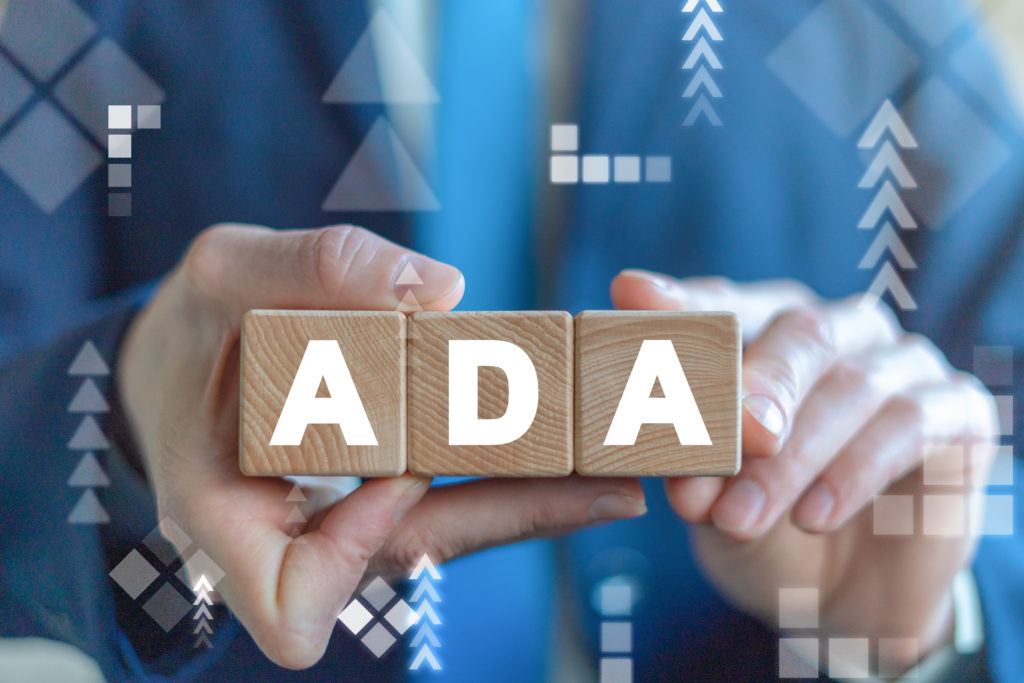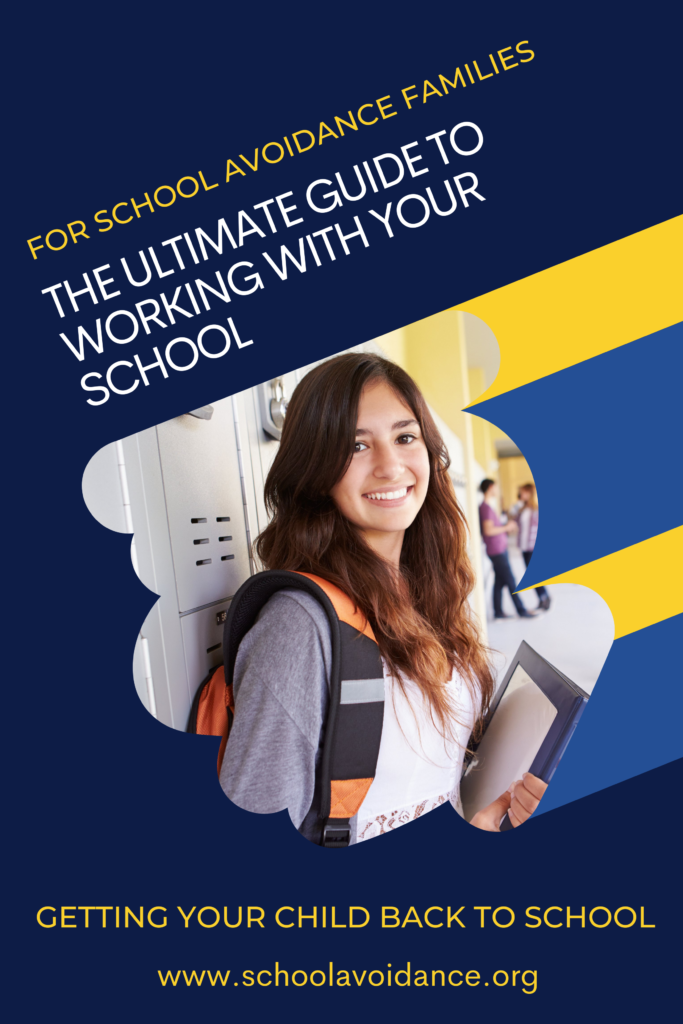Section 504 is a federal law designed to protect the rights of individuals with disabilities in programs and activities that receive federal financial assistance from the U.S. Department of Education.
A 504 plan is a legal document and instrument developed to provide accommodations and assistance that ensures a child with a disability has access to public education and services.
Remember that an emotional disability is considered a qualifying disability, just like a physical or learning disability.

Section 504 is a federal civil rights law meant to protect individuals with disabilities from discrimination.
According to the Office of Civil Rights (OCR) “The Section 504 regulations require a school district to provide a “free appropriate public education” (FAPE) to each qualified student with a disability who is in the school district’s jurisdiction, regardless of the nature or severity of the disability. Under Section 504, FAPE consists of the provision of regular or special education and related aids and services designed to meet the student’s individual educational needs as adequately as the needs of nondisabled students are met.”
504 is meant to “level the playing field,” and, unlike special education, it is not supplemental in nature.
Accommodations are based on what the average person without a disability has access to and not what an individual might need to reach their individual potential.
Section 504 accommodations must be reasonable, such as modifications or adjustments that allow individuals equal opportunity to participate.
The Office of Civil Rights says the following services are available to students with disabilities under Section 504.
"Have a physical or mental impairment that substantially limits one or more major life activities; or have a record of such an impairment; or be regarded as having such an impairment. The determination of whether a student has a physical or mental impairment that substantially limits a major life activity must be made on the basis of an individual inquiry." The Section 504 regulatory provision at 34 C.F.R. 104.3(j)(2)(i) defines a physical or mental impairment as any physiological disorder or condition or any mental or psychological disorder, such as emotional or mental illness, and specific learning disabilities.
The Office of Civil Rights Tweet
Major Life Activities as Defined in Section 504

The determination of substantial limitation (of major life activity) must be made on a case-by-case basis with respect to each individual student.
The Section 504 regulatory provision at 34 C.F.R. 104.35 (c) requires that a group of knowledgeable persons draw upon information from a variety of sources in making this determination.
These private evaluations are called Independent Educational Evaluations (IEE). Defined as “an evaluation conducted by a qualified examiner who is not employed by the public agency responsible for the education of the child in question.” 34 C.F.R. 300.502(a)(3)(i)
If it is determined that the child needs more assistance than a 504 plan can offer, It is the responsibility of the the 504 team to refer the student for special education and related services as note under the Individuals with Disabilities Education Improvement Act (IDEA).
A school district has no flexibility to opt to provide services and accommodations under Section 504 when the student is IDEA (IEP) eligible.
Section 504 requires districts to provide notice to parents explaining any evaluation and placement decisions affecting their children and explaining the parents’ right to review educational records and appeal any decision regarding evaluation and placement through an impartial hearing.
Unlike an IEP, a 504 will not include academic goals, benchmarks, or measurements.
There are no restrictions regarding what supports and services might be appropriate on an IEP or a 504 plan. If the school say’s that a particular service is not allowed on a 504, that would be incorrect.
All supports, services, modifications are based on the individual’s needs, whether on an IEP or 504.
The ultimate goal of getting an IEP or a 504 plan for your child is to provide possible services, accommodations, and modifications that would help get your child back into school, engaging and learning in school.
According to the U.S. Department of Education Office for Civil Rights (OCR) Parent and Educator Resource Guide to Section 504 in Public Elementary and Secondary Schools (December 2016)
“Section 504 does not provide a specific amount of time for school districts to complete an evaluation. OCR generally looks to the IDEA timeline, or if applicable, to State requirements or local district policy to assess the reasonableness of the time it takes the school to evaluate the student once parental consent has been obtained.”
“School districts violate Section 504 when they deny or delay conducting an evaluation of a student when it would have been reasonable for a staff member to have suspected that a student has a disability and needs special education or related services because of that disability.”

(1) a physical or mental impairment that substantially limits a major life activity;
(2) a record of such an impairment; or
(3) being regarded as having such an impairment. 29 U.S.C. § 705(9)(B); 42 U.S.C. § 12102(1).
The Amendments Act significantly changes how the term “disability” is to be interpreted.
Specifically, Congress directed that the definition of disability shall be construed broadly and that the determination of whether an individual has a disability should not demand extensive analysis.
A child with school avoidance who may have an anxiety disorder, depression, PTSD, Bipolar Disorder, OCD, or Learning Difference clearly has a disability under these guidelines.

Many school avoidance families are frightened by the repercussions of their child’s missed school days. Some schools may threaten to deny credits or reduce grades when a particular number of absences accrue.
For this reason, families often ask about modifying attendance policies for their kids with school avoidance. In our private FB group, we hear about this all the time. Different schools have different answers.
But the Office of Civil Rights clears up this confusion below.
"A public entity shall make reasonable modifications in policies, practices, or procedures when the modifications are necessary to avoid discrimination on the basis of disability unless the public entity can demonstrate that making the modifications would fundamentally alter the nature of the service, program, or activity.
The ADA Title II, 28 C.F.R. § 35.130(b)(7). Tweet
This clarification from the ADA says schools are required to make reasonable modifications in policies when the modification is necessary to avoid discrimination on the basis of disability. Your child’s emotional disorder or learning difference that causes their school avoidance is their disability.
Exposure therapy is a preferred and proven method of treatment for school avoidance, so these strategies should be considered.
Exposures are very slow and gradual. The student shouldn’t be rushed. You want them to be successful with each exposure.
Ask your school for assistance from a school psychologist, school social worker, or licensed professional counselor who is capable of doing exposure therapy with your child.
Exposure therapy dictates that the student is assisted by a professional as they work on each exposure. After successful completion of an exposure, the child may be given homework to practice on their own. Access our detailed information about exposure therapy.
Accommodations and Modifications for School Avoidance
This 504 guide (below) explains the components of a 504 Plan.
It also details possible accommodations and modifications that may help school avoidant kids with ADD/ADHD (p 8), anxiety (p 12), emotional disability (p 30), trauma (p 47), and many other disabilities that may apply to your child.
Remember that any list you read of possible accommodations and modifications is not exhaustive.
You can flip through the pages or print what you need. This guide is shared courtesy of educational consultant David Bateman, PhD
Frequently Asked Questions About Section 504
This 504 FAQ booklet below from the OCR is also very helpful. It answers a lot of common questions about Section 504 and how it may apply to your child.
Click the booklet below to read. You can zoom and print this document.
Disclaimer: This site is designed by School Avoidance Alliance to assist parents, family, friends, caregivers, educators, advocates, and other professionals involved with helping children and finding resources to understand, help and cope with school avoidance, as well as to increase public awareness regarding school avoidance. The contents of this website are presented for informational and educational purposes only. Nothing on this website is to be construed as professional advice on medical, legal, technical, or therapeutic matters. By accessing and using the information on this site, you agree to waive any rights to hold the site developer(s), or any individual and/or group associated with this site, liable for any damage that may result from the use of the information presented.
Section 504 of the Rehabilitation Act of 1973 protects the rights of individuals with disabilities in programs and activities that receive federal financial assistance, including federal funds. Section 504 provides that: “No otherwise qualified individual with a disability in the United States . . . shall, solely by reason of her or his disability, be excluded from the participation in, be denied the benefits of, or be subjected to discrimination under any program or activity receiving Federal financial assistance . . .”
The U.S. Department of Education (ED) enforces Section 504 in programs and activities that receive funds from ED. Recipients of these funds include public school districts, institutions of higher education, and other state and local education agencies. ED has published a regulation implementing Section 504 (34 C.F.R. Part 104) and maintains an Office for Civil Rights (OCR), with 12 enforcement offices and a headquarters office in Washington, D.C., to enforce Section 504 and other civil rights laws that pertain to recipients of funds.
The Section 504 regulation requires a school district to provide a “free appropriate public education” (FAPE) to each qualified person with a disability who is in the school district’s jurisdiction, regardless of the nature or severity of the person’s disability.
This pamphlet answers the following questions about FAPE according to Section 504:
All qualified persons with disabilities within the jurisdiction of a school district are entitled to a free appropriate public education. The ED Section 504 regulation defines a person with a disability as “any person who: (i) has a physical or mental impairment which substantially limits one or more major life activities, (ii) has a record of such an impairment, or (iii) is regarded as having such an impairment.” 3
For elementary and secondary education programs, a qualified person with a disability is a person with a disability who is:
In general, all school-age children who are individuals with disabilities as defined by Section 504 and IDEA are entitled to FAPE.
An appropriate education may comprise education in regular classes, education in regular classes with the use of related aids and services, or special education and related services in separate classrooms for all or portions of the school day. Special education may include specially designed instruction in classrooms, at home, or in private or public institutions, and may be accompanied by related services such as speech therapy, occupational and physical therapy, psychological counseling, and medical diagnostic services necessary to the child’s education.
An appropriate education will include:
Due process procedures must also provide for an impartial hearing with the opportunity for participation by parents and representation by counsel, and a review procedure.
To be appropriate, education programs for students with disabilities must be designed to meet their individual needs to the same extent that the needs of nondisabled students are met. An appropriate education may include regular or special education and related aids and services to accommodate the unique needs of individuals with disabilities.
One way to ensure that programs meet individual needs is through the development of an individualized education program (IEP) for each student with a disability. IEPs are required for students participating in the special education programs of recipients of funding under the IDEA.
The quality of education services provided to students with disabilities must equal the quality of services provided to nondisabled students. Teachers of students with disabilities must be trained in the instruction of individuals with disabilities. Facilities must be comparable, and appropriate materials and equipment must be available.
Students with disabilities may not be excluded from participating in nonacademic services and extracurricular activities on the basis of disability. Persons with disabilities must be provided an opportunity to participate in nonacademic services that is equal to that provided to persons without disabilities. These services may include physical education and recreational athletics, transportation, health services, recreational activities, special interest groups or clubs sponsored by the school, and referrals to agencies that provide assistance to persons with disabilities and employment of students.
Students with disabilities and students without disabilities must be placed in the same setting, to the maximum extent appropriate to the education needs of the students with disabilities. A recipient of ED funds must place a person with a disability in the regular education environment, unless it is demonstrated by the recipient that the student’s needs cannot be met satisfactorily with the use of supplementary aids and services. Students with disabilities must participate with nondisabled students in both academic and nonacademic services, including meals, recess, and physical education, to the maximum extent appropriate to their individual needs.
As necessary, specific related aids and services must be provided for students with disabilities to ensure an appropriate education setting. Supplementary aids may include interpreters for students who are deaf, readers for students who are blind, and door-to-door transportation for students with mobility impairments.
A recipient of ED funds that places an individual with disabilities in another school is responsible for taking into account the proximity of the other school to the student’s home. If a recipient operates a facility for persons with disabilities, the facility and associated activities must be comparable to other facilities, services, and activities of the recipient.
Failure to provide persons with disabilities with an appropriate education frequently occurs as a result of misclassification and inappropriate placement. It is illegal to base individual placement decisions on presumptions and stereotypes regarding persons with disabilities or on classes of such persons. For example, it would be a violation of the law for a recipient to adopt a policy that every student who is hearing impaired, regardless of the severity of the child’s disability, must be placed in a state school for the deaf.
Section 504 requires the use of evaluation and placement procedures that ensure that children are not misclassified, unnecessarily labeled as having a disability, or incorrectly placed, based on inappropriate selection, administration, or interpretation of evaluation materials.
A school district must conduct or arrange for an individual evaluation at no cost to the parents before any action is taken with respect to the initial placement of a child who has a disability, or before any significant change in that placement.
Recipients of ED funds must establish standards and procedures for initial and continuing evaluations and placement decisions regarding persons who, because of a disability, need or are believed to need special education or related services.
These procedures must ensure that tests and other evaluation materials:
Recipients must draw upon a variety of sources in the evaluation and placement process so that the possibility of error is minimized. All significant factors related to the learning process must be considered.
These sources and factors include, for example, aptitude and achievement tests, teacher recommendations, physical condition, social and cultural background, and adaptive behavior. “Adaptive behavior is the effectiveness with which the individual meets the standards of personal independence and social responsibility expected of his or her age and cultural group.” (See Appendix A to 34 CFR Part 104, Evaluation and Placement.)
Information from all sources must be documented and considered by a group of knowledgeable persons, and procedures must ensure that the student is placed with nondisabled students to the greatest extent appropriate.
Periodic reevaluation is required. This may be conducted in accordance with the IDEA regulation, which requires reevaluation at three-year intervals (unless the parent and school district agree reevaluation is unnecessary) or more frequently if conditions warrant, or if the child’s parent or teacher requests a reevaluation.
Public elementary and secondary schools must employ procedural safeguards regarding the identification, evaluation, or educational placement of persons who, because of disability, need or are believed to need special instruction or related services.
Parents must be told about these procedures. In addition, parents or guardians must be notified of any evaluation or placement actions, and must be allowed to examine the student’s records. The due process procedures must allow the parents or guardians of students in elementary and secondary schools to challenge evaluation and placement procedures and decisions.
If parents or guardians disagree with the school’s decisions, they must be afforded an impartial hearing, with an opportunity for their participation and for representation by counsel. A review procedure also must be available to parents or guardians who disagree with the hearing decision.
Recipients operating federally funded programs must provide education and related services free of charge to students with disabilities and their parents or guardians. Provision of a free education is the provision of education and related services without cost to the person with a disability or his or her parents or guardians, except for fees equally imposed on nondisabled persons or their parents or guardians.
If a recipient is unable to provide a free appropriate public education itself, the recipient may place a person with a disability in, or refer such person to, a program other than the one it operates.
However, the recipient remains responsible for ensuring that the education offered is an appropriate education, as defined in the law, and for coverage of financial obligations associated with the placement.
The cost of the program may include tuition and other related services, such as room and board, psychological and medical services necessary for diagnostic and evaluative purposes, and adequate transportation. Funds available from any public or private source, including insurers,4 may be used by the recipient to meet the requirements of FAPE.
If a student is placed in a private school because a school district cannot provide an appropriate program, the financial obligations for this placement are the responsibility of the school district. However, if a school district makes available a free appropriate public education and the student’s parents or guardian choose to place the child in a private school, the school district is not required to pay for the student’s education in the private school. If a recipient school district places a student with a disability in a program that requires the student to be away from home, the recipient is responsible for the cost of room and board and nonmedical care.
To meet the requirements of FAPE, a recipient may place a student with a disability in, or refer such student to, a program not operated by the recipient. When this occurs, the recipient must ensure that adequate transportation is provided to and from the program at no greater personal or family cost than would be incurred if the student with a disability were placed in the recipient’s program.
Part B of IDEA requires participating states5 to ensure that a free appropriate public education (FAPE) is made available to eligible children with disabilities in mandatory age ranges residing in the state. To be eligible, a child must be evaluated as having one or more of the disabilities listed in IDEA and determined to be in need of special education and related services. Evaluations must be conducted according to prescribed procedures. The disabilities specified in IDEA include: mental retardation, hearing impairments including deafness, speech or language impairments, visual impairments including blindness, emotional disturbance, orthopedic impairments, autism, traumatic brain injury, other health impairments, specific learning disabilities, deaf-blindness, and multiple disabilities. Additionally, states and local education agencies (LEAs) may adopt the term “developmental delay” for children aged 3 through 9 (or a subset of that age range) who are experiencing a developmental delay as defined by the state and need special education and related services.
The requirements for FAPE under IDEA are more detailed than those under Section 504. In specific instances detailed in the Section 504 regulation (for example, with respect to reevaluation procedures and the provision of an appropriate education), meeting the requirements of IDEA is one means of meeting the requirements of the Section 504 regulation.
IDEA requirements apply to states receiving financial assistance under IDEA. States must ensure that their political subdivisions that are responsible for providing or paying for the education of children with disabilities meet IDEA requirements. All states receive IDEA funds. Section 504 applies to any program or activity receiving ED financial assistance.
IDEA is administered by ED’s Office of Special Education Programs (OSEP), a component of ED’s Office of Special Education and Rehabilitative Services (OSERS). For more information about IDEA, contact OSERS at 400 Maryland Ave. S.W., Washington, DC 20202-7100. Additional information is also available at: http://www. ed.gov/about/offices/list/osers/osep/.
Unfortunately only a small percentage of school professionals, therapists, educational advocates and policy makers understand school avoidance best practices. So, you must become the expert to ensure your child is getting:
The time passing slowly without progress is the worst feeling. It wouldn’t have taken five years of suffering and uncertainty if I had this expert guidance during my son’s school avoidance. We would have saved $29,000 in lawyer fees and $69,000 for private schools.
